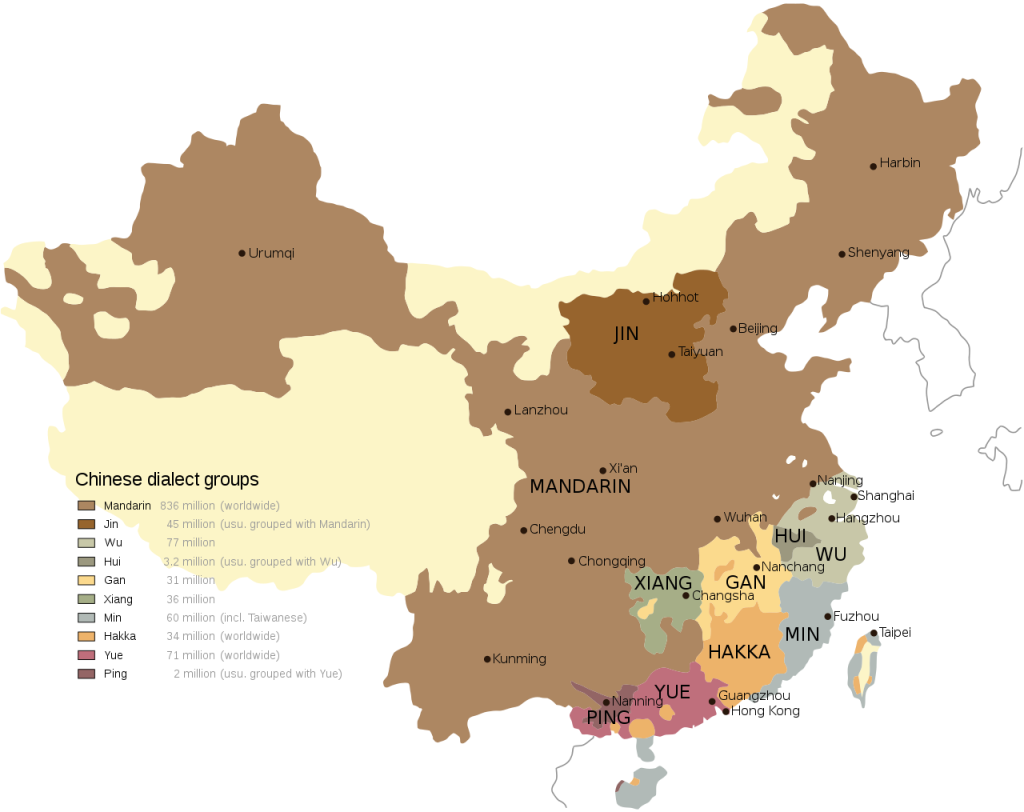As the biggest eCommerce market on earth, China offers lucrative opportunities for many international businesses. China has a stable economy with high internet usage and a large population.
Website localization for China depends on successful translations and a solid understanding of your target market. In this guide, we’ll share best practices for localizing and translating a site for a Chinese audience.
Localization Tips for China
The first thing that probably strikes you about China is how big it is. The People’s Republic of China (PRC) has the world’s largest population – about 1.4 billion people. Yes, that’s a billion with a “b.” To put this in perspective, the US has a population of approximately 334 million. China is also number one in the world for internet and smartphone usage.
In your digital marketing strategy, it pays to consider localizing for this lucrative market.
Here are our best practices for localizing for a Chinese audience.
Get to Know The Chinese Consumer Market
These days, people around the world shop online more than ever. But shoppers in different countries do it very differently. Learning how your target audience shops is an important part of localizing for a new market.
Here’s are some interesting demographics for the Chinese market:
- China has a whopping 632 million internet users, which resulted in a booming eCommerce market.
- ECommerce is the biggest industry in China, making up 3.7% of the country’s GDP—compared to just 2.7% in the US. Other popular industries in China include gaming and fashion.
- China is the biggest smartphone market in the world, topping 954 million smartphone users in 2021. The Chinese market for smartphones is larger than India, the US, and Indonesia combined.
- The majority of China’s population lives in urban areas (approximately 60%).
- The Chinese are generally brand-conscious, with a big emphasis on brand quality.
- According to surveys, 73% of Chinese consumers view shopping as a fun leisure activity.
Be Mindful of The Great Firewall of China
If you plan to do business in China, you’ll need to pay close attention to China’s internet rules and regulations. The internet is highly regulated by the Chinese government. Any sites that don’t adhere to China’s regulations are blocked via a nationwide firewall.
While some foreign companies are willing to play by China’s rules, others aren’t. Hundreds of popular sites and applications are completely blocked, including Facebook, Snapchat, Twitter, Google, Netflix, Uber and many more.
Some companies have found ways to make their business work within China’s regulations. US companies can host their websites in China, but a license is required to do so. One major company that does this is Apple. To get around this difficulty, many Western brands partner with Tmall, China’s alternative to Amazon. For instance, Costco relies entirely on Tmall for its sales in China.
Be Mobile-Friendly
90% of Chinese internet users access the web through their smartphones. So, your mobile website or app can make or break your marketing efforts in China.
According to surveys, consumers in China prefer to purchase almost everything online via smartphones. Because of this dependency on phones, many Chinese choose their phone numbers as their usernames. What’s more, scannable QR codes are also very popular.
Use SEO to your Advantage
If you want Chinese customers to find your brand, the search experience is important. When an English website is translated to Chinese, it also needs to be optimized for searches in Chinese. The right keywords need to be identified to help the site rank in popular Chinese search engines like Baidu.
Don’t Forget About Social Media
If you plan to share your translated marketing campaign or website on social, be sure to pick the right platform. Many popular social media platforms like Facebook are blocked in China.
WeChat, a Chinese instant messaging and social media app, is the most popular platform in China with over a billion users. Other common apps include Weibo (an alternative to Twitter) and Douyin (a video-sharing app that’s similar to TikTok.)
Best Practices for Chinese Translation
Although some people think of Chinese as one language, it’s actually a language family with many different dialects. Chinese also has two distinct writing systems: simplified and traditional.
To make matters more complicated, regional dialect differences are strong. A piece of content that works for one region of China may not be intelligible in different regions.
Effectively translating English to Chinese can be a challenge. Read on to learn our top 4 tips for achieving a high-quality Chinese translation.
1. Select a Chinese Dialect
Before you start your localization project, you need to choose the proper Chinese dialect for the region you’re targeting.
Here are China’s most commonly-spoken dialects:
- Mandarin
- Mandarin (also known as standard Chinese) refers to a set of dialects of the Chinese language. Mandarin is the most widely spoken Chinese dialect group, with over 1 billion speakers worldwide. Variants of Mandarin are spoken by over 70% of China’s population.
- This official state language of China and Taiwan is most commonly spoken in northern and southwestern China.
- Wu
- Wu, or Shanghainese, is the second-largest dialect, with roughly 75 million speakers.
- This dialect is primarily spoken in cities like Shanghai, Suzhou, Ningbo, and Wuxi.
- Compared to Mandarin, Wu has different grammar, lexicon and pronunciation rules.
- Cantonese
- Cantonese is the third most spoken dialect, with an estimated 60 million speakers.
- Cantonese is common in southeastern China and Hong Kong.
2. Choose the Correct Writing System
When you localize for China, you’ll also need to use an appropriate writing system for your audience. There are two distinct written forms of Chinese: Traditional Chinese and Simplified Chinese.
Traditional Chinese preserves the same written characters that have been used for thousands of years. Simplified Chinese is a more modern, streamlined version of traditional Chinese characters.
The form you use will be determined by the location of your target audience. To decide which Chinese writing system to use in your localization efforts, just think about where your target audience is located:
- Simplified Chinese:
- This writing system is primarily used in mainland China, Singapore, and Malaysia.
- In the localization industry, it’s usually abbreviated as ZH_CN or ZH.
- Traditional Chinese:
- This writing system is mostly used in Taiwan, Hong Kong, and Macau.
- In the localization industry, it’s often abbreviated as ZH_TW.
3. Avoid Literal Translations
Many words and phrases used in Chinese writing do not correspond to words and phrases in English. This makes it quite difficult to translate from Chinese into English and vice-versa.
Instead of literal translation, use transcreation to recreate the source text with different wording. Some words and brand names can have a completely different meaning in another language, so you’ll have to get creative. If not, errors can happen.
For example, here are some infamous translation mistakes from big global brands who failed to properly localize for China:
- Pepsi’s English language slogan Pepsi Brings You Back to Life made a grand debut in China as Pepsi Brings You Back From The Grave.
- KFC found that its Finger-Lickin’ Good slogan was transformed into the cannibalistic sounding Eat Your Fingers Off.
- Mercedes-Benz used the brand name Bensi when it entered the Chinese market. Unfortunately, Bensi means Rush to Die.
4. Hire a Professional Translator or LSP
When working with Chinese dialects, machine translation should be avoided. Free tools like Google Translate won’t provide the highest-quality Chinese translations. For best results, hire a professional Chinese translator or LSP (language service provider). Native speakers have the know-how to provide culturally-appropriate translations. Don’t forget to use a style guide and glossary to keep your translations consistent.
How Localize can Help You Launch in China
According to market research on the global population, 20% of people who connect to the internet speak Chinese, but only about 1% of the content available on the web is in the Chinese language. This means there’s a big opportunity for businesses to reach a new market by localizing for China—the world’s second-largest economy.
When you localize your website for China, it’s important to work with professional translators who have a solid understanding of the region’s language, culture, and history. Your expert translation service or LSP can work seamlessly with the Localize platform to deliver the highest-quality Chinese translations.
Localize makes it easy to manage, update, and publish Chinese translations in just a few minutes—not days, weeks or months. Contact us today to jumpstart your success in Asian markets.









